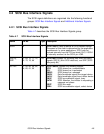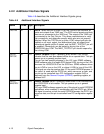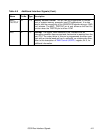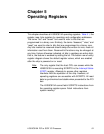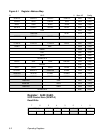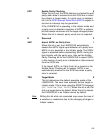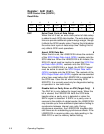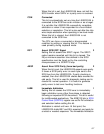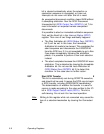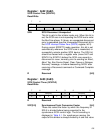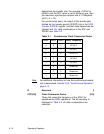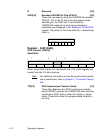
5-5
EPC Enable Parity Checking 3
When this bit is set, the SCSI data bus is checked for odd
parity when data is received from the SCSI bus in either
the initiator or target mode. If a parity error is detected,
bit 0 of the SCSI Interrupt Status Zero (SIST0) register is
set and an interrupt may be generated.
If the LSI53C810A is operating in the initiator mode and
a parity error is detected, assertion of SATN/ is optional,
but the transfer continues until the target changes phase.
When this bit is cleared, parity errors are not reported.
R Reserved 2
AAP Assert SATN/ on Parity Error 1
When this bit is set, the LSI53C810A automatically
asserts the SATN/ signal upon detection of a parity error.
SATN/ is only asserted in the initiator mode. The SATN/
signal is asserted before deasserting SACK/ during the
byte transfer with the parity error. Also set the Enable
Parity Checking bit for the LSI53C810A to assert SATN/
in this manner. A parity error is detected on data received
from the SCSI bus.
If the Assert SATN/ on Parity Error bit is cleared or the
Enable Parity Checking bit is cleared, SATN/ is not
automatically asserted on the SCSI bus when a parity
error is received.
TRG Target Mode 0
This bit determines the default operating mode of the
LSI53C810A. The user must manually set the target or
initiator mode. This is done using the SCRIPTS language
(SET TARGET or CLEAR TARGET). When this bit is set, the
chip is a target device by default. When this bit is cleared,
the LSI53C810A is an initiator device by default.
Note: Writing this bit while not connected may cause the loss of
a selection or reselection due to the changing of target or
initiator modes.



